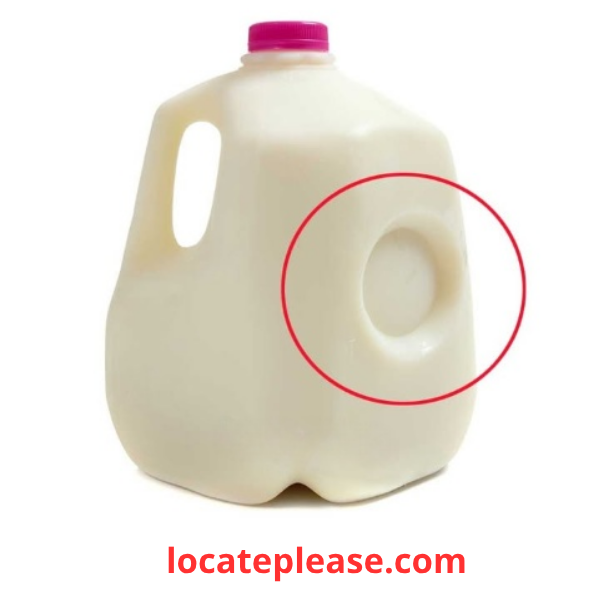At first glance, the small circular dent on the side of a plastic milk jug might seem insignificant—or even like a manufacturing flaw. But this unassuming design feature is far from accidental. In fact, it plays several crucial roles that enhance the functionality, durability, and sustainability of the jug. From managing pressure to aiding in recycling, this clever detail demonstrates how thoughtful engineering can make everyday products more efficient and eco-friendly.
Managing Pressure Inside the Jug
When a milk jug is filled, the liquid inside exerts pressure on its walls. This pressure can increase further due to temperature changes or rough handling during transport. The circular dent acts as a flex point, allowing the jug to expand or contract slightly without cracking or warping. Without this feature, the rigid structure of the jug could become misshapen under stress, leading to leaks or spills. By incorporating the dent, manufacturers ensure the jug remains strong and reliable, even when subjected to challenging conditions.
Preventing Breakage During Transport
Milk jugs often endure a lot of movement during shipping, stacking, and storage. They may be jostled, stacked on top of one another, or exposed to temperature fluctuations—all of which can put additional strain on the container. The circular dent helps absorb shocks and impacts, reducing the likelihood of cracks or breakage. If the jug is accidentally dropped, the dent also provides a bit of “give,” helping to prevent catastrophic spills. This simple yet effective design ensures your milk arrives safely at the store and stays intact until you bring it home.
Reducing Plastic Usage for Sustainability
In addition to improving durability, the circular dent serves an important environmental purpose: it reduces the amount of plastic needed to produce each jug. By strategically placing the dent, manufacturers can strengthen the jug’s structure without adding extra material. This not only cuts down on production costs but also minimizes waste, making the product more sustainable. As consumers grow increasingly concerned about single-use plastics, innovations like this help reduce the environmental footprint of everyday items.
Making Recycling Easier
Recycling is another area where the circular dent proves its worth. When it’s time to dispose of the jug, the dent makes it easier to crush, saving valuable space in recycling bins and trucks. This efficiency benefits the entire recycling process, from collection to processing. Some brands even take advantage of the indented area by adding logos or branding, turning the functional feature into a marketing opportunity.
A Smart Solution with Multiple Benefits
While many people overlook—or misunderstand—the purpose of the circular dent, it’s clear that this tiny detail has a significant impact. It enhances the structural integrity of the jug, prevents damage during transport, reduces material usage, and supports recycling efforts. Far from being a flaw, the dent is a testament to the power of intelligent design.
The next time you pick up a milk jug, take a moment to appreciate the thoughtfulness behind its creation. That small circular dent isn’t just a quirk of packaging—it’s a smart solution that makes our lives easier while contributing to a more sustainable future. And who knew such a humble feature could have such a big impact?










